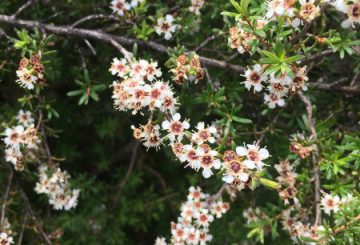NIWA (국립 수자원 및 대기 연구소) 는 타이라휘티와 혹스베이의 해양 지역을 조사하고 있습니다.사이클론 가브리엘이 어업 서식지와 해저 생태계에 미치는 영향을 평가하는 것이 목적입니다.
사이클론은 해양 환경을 크게 변화시킬 수 있습니다.여기에는 육지에서 바다로 유입되는 실트, 해양 혼합 증가, 해저에서의 퇴적물 격변 등이 포함됩니다.
프로젝트 리더인 Daniel Leduc 박사는 사이클론이 육지와 재산에 눈에 띄게 피해를 입히는 반면 바다에 미치는 영향은 덜 분명하다고 언급했습니다.그는 이렇게 말했습니다. “사이클론 가브리엘 이후 많은 집들이 퇴적물 속에 묻혔습니다.마찬가지로 우리 해양 환경도 이러한 어려움에 직면하고 있지만 물의 움직임의 역학 때문에 도표화하기가 어렵습니다.”
NIWA 팀은 특히 해저 근처에 해양 생물이 서식하는 지역에서 이러한 영향을 평가하는 데 집중하고 있습니다.
퇴적물의 최종 안착지를 결정하기 위해 NIWA는 모델을 개발하고 있습니다.이 모델에는 해상 항해 중에 수집한 위성 이미지, 해저 비디오 영상 및 퇴적물 샘플의 데이터가 통합됩니다.
4월 초, NIWA는 멀티빔 수중 음파 탐지기를 사용하여 13일간의 해저 매핑 작성을 완료했습니다.그들은 사이클론으로 인한 퇴적물 퇴적물을 확인하는 것을 목표로 삼았습니다.이 활동에 이어 6월에는 추가 데이터 수집을 위한 19일간의 해상 항해가 이어졌습니다.
고무적이게도 Leduc 박사는 퇴적물 샘플에서 소라게와 어린 갑각류와 같은 해양 생물의 흔적을 보고했습니다.
그러나 NIWA의 해양 지질학자인 조슈 마운트조이 박사는 해저 지역마다 다르게 영향을 받았다고 말했습니다.그는 이렇게 말했습니다. “일부 지역에서는 퇴적물 샘플에서 사이클론 효과가 발생할 가능성이 있는 것으로 나타났습니다.이에 반해 다른 지역은 해양 생물은 거의 없었지만 나무 잔해가 많았습니다.”
뉴질랜드 수산부가 이 연구를 의뢰했습니다.이번 발견은 사이클론이 지역 어업에 미치는 영향을 이해하는 데 도움이 될 것입니다.
과학 및 정보 담당 이사인 사이먼 로렌스 (Simon Lawrence) 는 이 연구의 필요성을 강조했습니다.그는 미래를 위한 결정을 내리기 위해서는 현재의 수중 변화를 이해하는 것이 중요하다고 말했습니다.그는 또한 NIWA가 진행 중인 상황을 추적하기 위해 10월에 또 다른 항해를 계획했다고 언급했습니다
.

















































-660x440.jpg)











